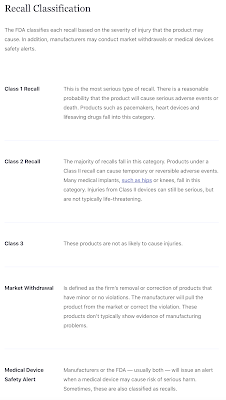A recent study from Israel, the "canary in the coal mine" when it comes to COVID-19 vaccination programs compares natural immunity to the SARS-CoV-2 virus to that achieved through vaccination. Let's look at the results of the study by Dr. Sivan Gazit et al entitled "Comparing SARS-CoV-2 natural immunity to vaccine-induced immunity: reinfections versus breakthrough infections" as shown here:
Please note that the research has not been peer reviewed at this time.
The authors conducted a retrospective observational study comparing three groups of individuals noting that the fully vaccinated group served as the reference group for the study.:
1.) Individuals who had not been infected by the SARS-CoV-2 virus previously (SARS-CoV-2-naive) and who received a two-dose regimen of the Pfizer - BioNTech mRNA vaccine by February 28, 2021 and who did not receive the third dose of vaccine by the end of the study period. A total of 673,676 individuals met this requirement.
2.) individuals who had been previously infected by the SARS-CoV-2 virus as recorded using a PCR test by February 28, 2021 and had not been vaccinated. A total of 62,883 individuals met this requirement.
3.) individuals who had been previously infected with the SARS-CoV-2 virus by February 28, 2021 and who had receive a single dose of vaccine by May 25, 2021. A total of 42,099 individuals met this requirement.
This is the largest real-world observational study that has been undertaken to date which compares natural immunity gained through previous SARS-CoV-2 infections to those afforded by Pfizer's BNT162b2 mRNA vaccine.
The study population included individuals aged 16 years and older who were vaccinated prior to February 28, 2021, who had a documented SARS-CoV-2 infection by February 28, 2021 or who had both a documented SARS-CoV-2 infection by February 28, 2021 and received one dose of the vaccine by May 25, 2021, 7 days prior to the study period began.
The authors evaluated four outcomes:
1.) SARS-CoV-2 infection.
2.) symptomatic disease.
3.) COVID-19-related hospitalization.
4.) COVID-19-related death.
The follow-up period was from June 1, 2021 to August 14, 2021 when the Delta variant was predominant in Israel.
Here are the results of two of the models used, noting that the authors adjusted the results for comorbidities:
1.) Model 1 - Previously infected vs. vaccinated individuals with matching for the time of the first event:
During the followup period, a total of 257 cases of SARS-CoV-2 infection were recorded with 238 occurring in the vaccinated group (breakthrough infections), 19 in the previously infected group (reinfections). SARS-CoV-2-naive vaccinated individuals were 13.06 times more likely to have a breakthrough infection with the Delta variant compared to those who were previously infected with the virus.
As for symptomatic infections during the followup period, a total of 199 cases were recorded, 191 of which were in the vaccinated group and 8 in the previously infected group. SARS-CoV-2-naive vaccinated individuals were 27.02 times more likely to have a symptomatic breakthrough infection with the Delta variant compared to those who were previously infected with the virus.
As for hospitalizations, a total of 9 COVID-19 hospitalizations were recorded, 8 of which were in the vaccinated group and 1 in the previously infected group.
No COVID-19-related deaths were recorded.
2.) Model 2 - Previously infected vs. vaccinated individuals without matching for the time of the first event:
When comparing fully vaccinated individuals to those previously infected (including during 2020), the authors found that throughout the followup period there were 748 cases of SARS-CoV-2 infection, 640 of which were in the vaccinated group (breakthrough infections) and 108 in the previouslyinfected group (reinfections). SARS-CoV-2-naive vaccinated individuals were 5.96 times more likely to have a breakthrough infection with the Delta variant compared to those that were previously infected with the virus.
As for symptomatic infections, a total of 522 cases were recorded, 484 of which were in the vaccinated group and 68 in the previously infected group. SARS-CoV-2-naive vaccinated individuals were 7.13 times more likely to have a symptomatic breakthrough infection with the Delta variant compared to those who were previously infected with the virus.
As for hospitalizations, a total of 25 COVID-19 hospitalizations were recorded, 21 of which were in the vaccinated group and 4 in the previously infected group. Vaccinated individuals were 6.7 times more likely to be admitted to hospital than those who were reinfected.
No COVID-19-related deaths were recorded.
Here is an excerpt from the paper's conclusion:
"This analysis demonstrated that natural immunity affords longer lasting and stronger protection against infection, symptomatic disease and hospitalization due to the Delta variant of SARS-CoV-2, compared to the BNT162b2 two-dose vaccine-induced immunity. Notably, individuals who were previously infected with SARS-CoV-2 and given a single dose of the BNT162b2 vaccine gained additional protection against the Delta variant. The long-term protection provided by a third dose, recently administered in Israel, is still unknown."





































